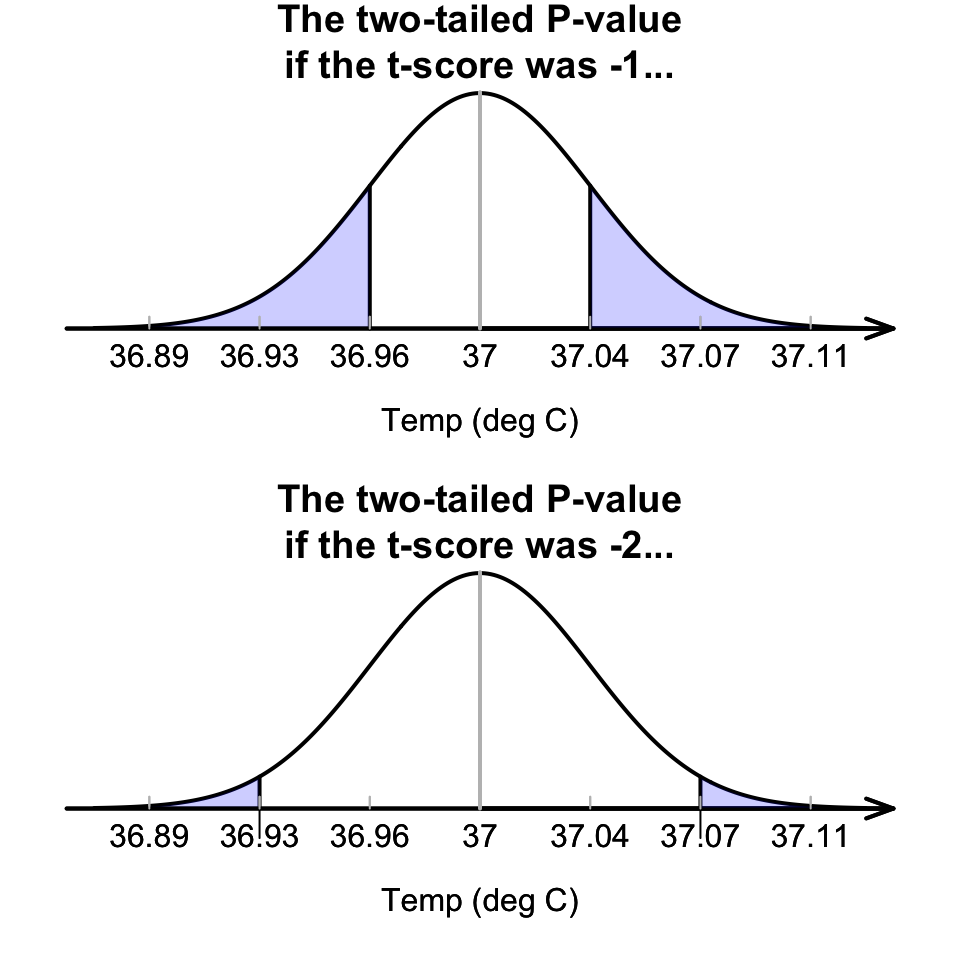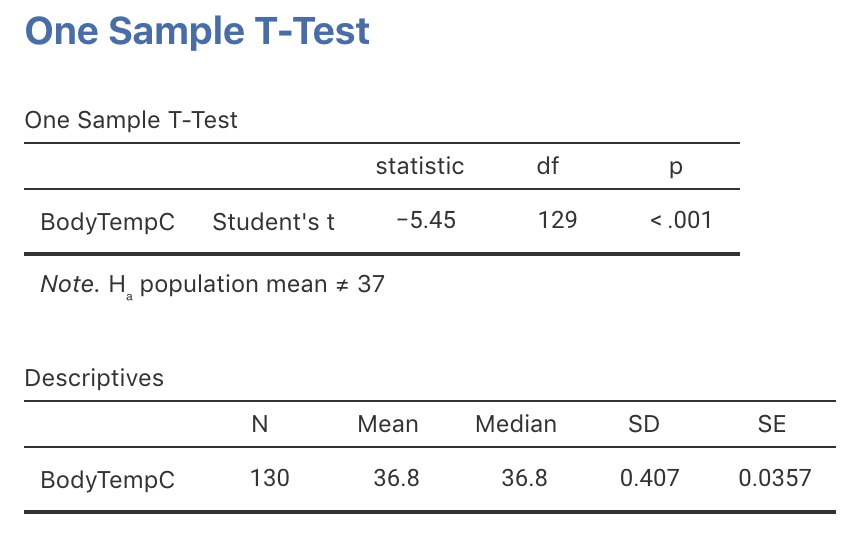27.5 -values: Consistency with assumption?
This is the decision-making progress so far:
- Assume that the population mean is (this is ).
- Based on this assumption, describe what to expect from the sample means (Fig. 27.2).
- The observed statistic is computed, relative to what is expected using a -score (Fig. 27.3): .
The value of the -score shows that the value of is highly unusual. How unusual can be assessed more precisely using a -value, which is used widely in scientific research. The -value is a way of measuring how unusual an observation is (if is true).
values can be approximated using the 68–95–99.7 rule and a diagram (Sect. 27.5.1), but more commonly by using software (Sect. 27.5.2).
27.5.1 Approximating -values using the 68–95–99.7 rule
The -value is the area more extreme than the calculated -score. For example:
If the calculated -score was , the two-tailed -value would be the shaded area in Fig. 27.4 (top panel): About 16%, based on the 68–95–99.7 rule. Because the alternative hypothesis is two-tailed, both sides of the mean are considered: the -value would be the same if .
If the calculated -score was , the two-tailed -value would be the shaded area shown in Fig. 27.4 (bottom panel): About 5%, based on the 68–95–99.7 rule. Because the alternative hypothesis is two-tailed, both sides of the mean are considered: the -value would be the same if .
Clearly, from what the -value means, a -value is always between 0 and 1.

FIGURE 27.4: Computing -values for the body temperature data
27.5.2 Finding -values using sofware
Software computes the
-score and a precise -value
(jamovi: Fig. 27.5;
SPSS: Fig. 27.6).
The output
(in jamovi, under the heading p;
in SPSS, under the heading Sig. (2-tailed))
shows that the -value is indeed very small.
Although SPSS reports the -value as 0.000,
-values can never be exactly zero,
so we interpret this as
‘zero to three decimal places,’
or that is less than 0.001
(written as , as jamovi reports).
0.000,
it really means (and we should write) :
That is, the -value is smaller than 0.001.
This -value means that, assumpting C, observing a sample mean as low as C just through sampling variation (from a sample size of ) is almost impossible. And yet, we did…
Using the decision-making process, this implies that the initial assumption (the null hypothesis) is contradicted by the data: The evidence suggests that the population mean body temperature is not .

FIGURE 27.5: jamovi output for conducting the -test for the body temperature data

FIGURE 27.6: SPSS output for conducting the -test for the body temperature data
SPSS always produces two-tailed -values,
calls then Significance values,
and labels them as Sig.